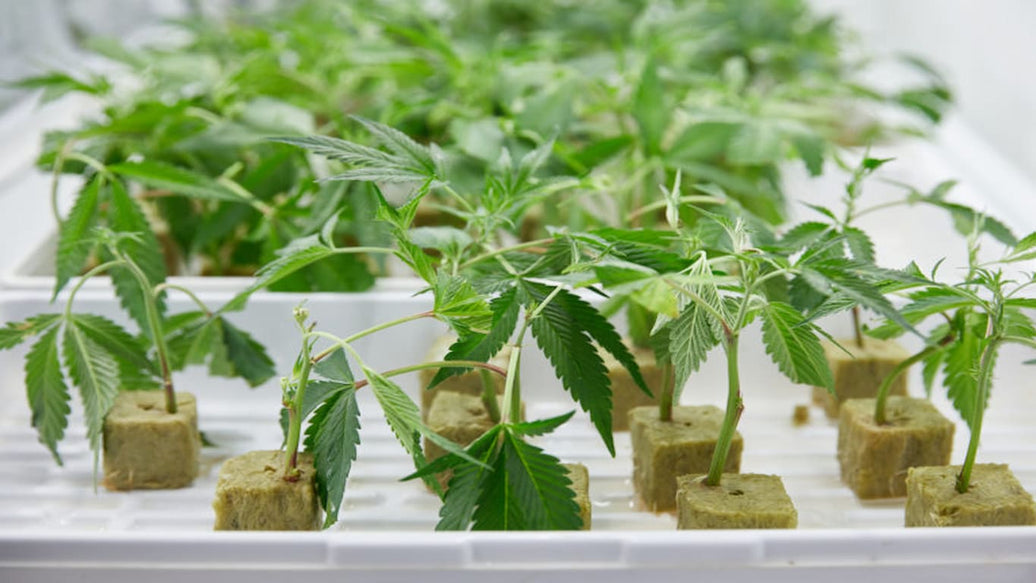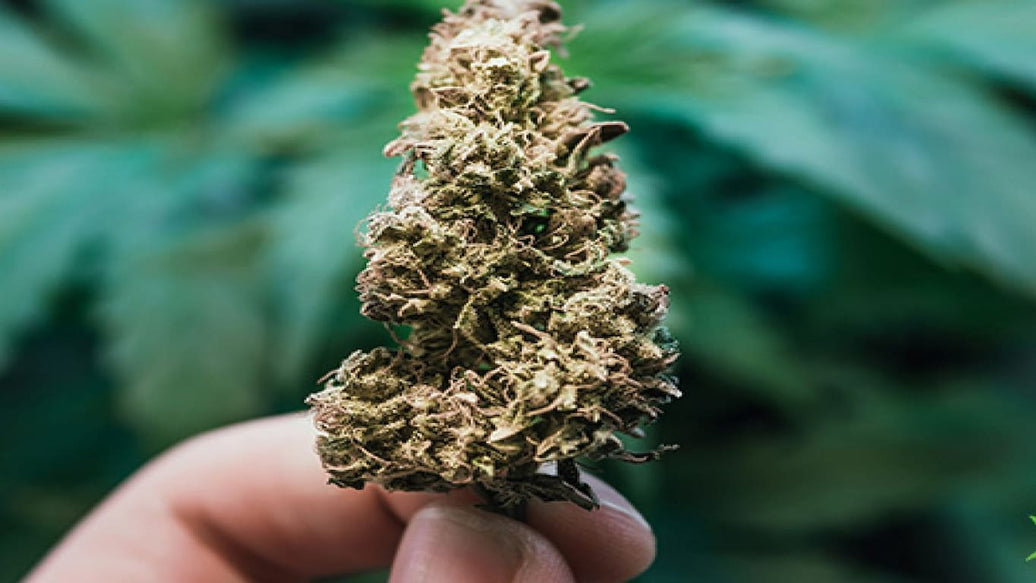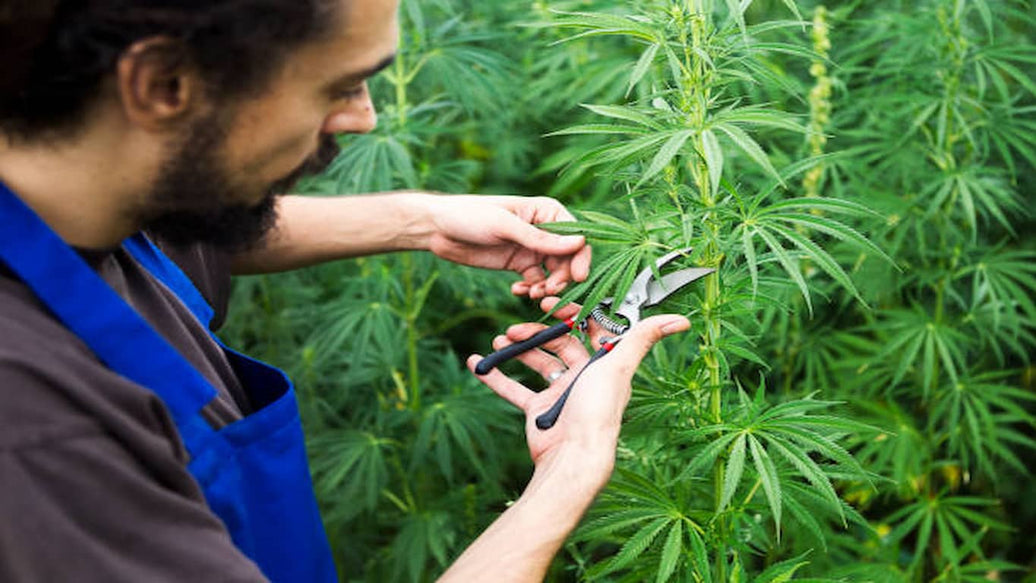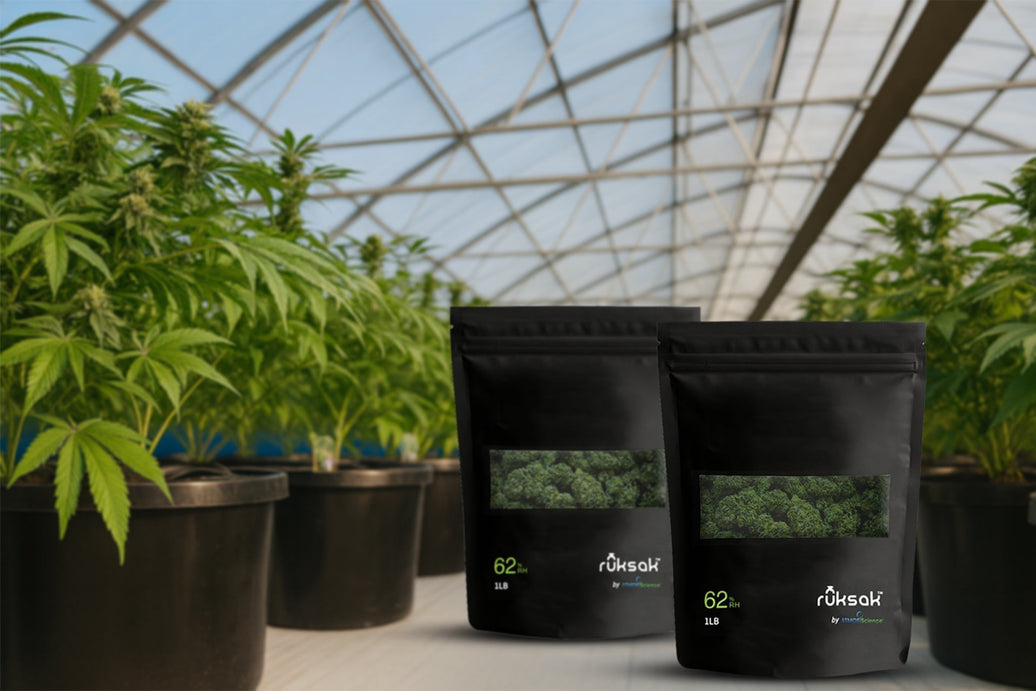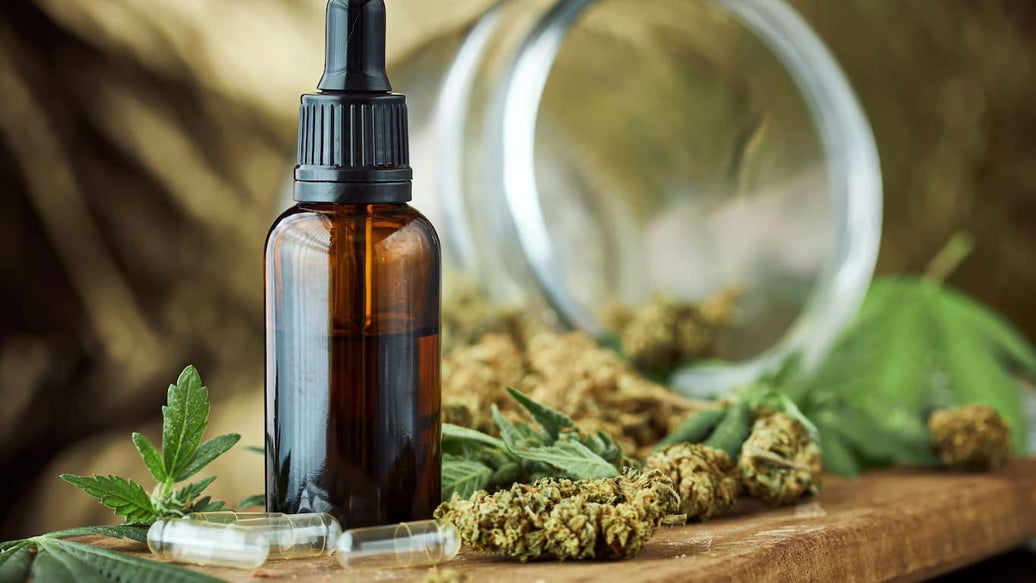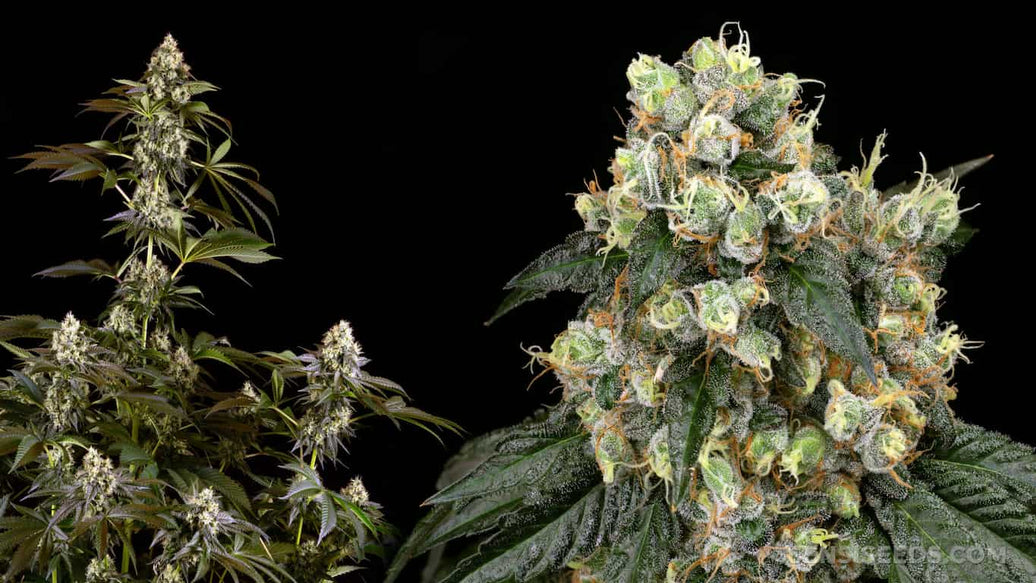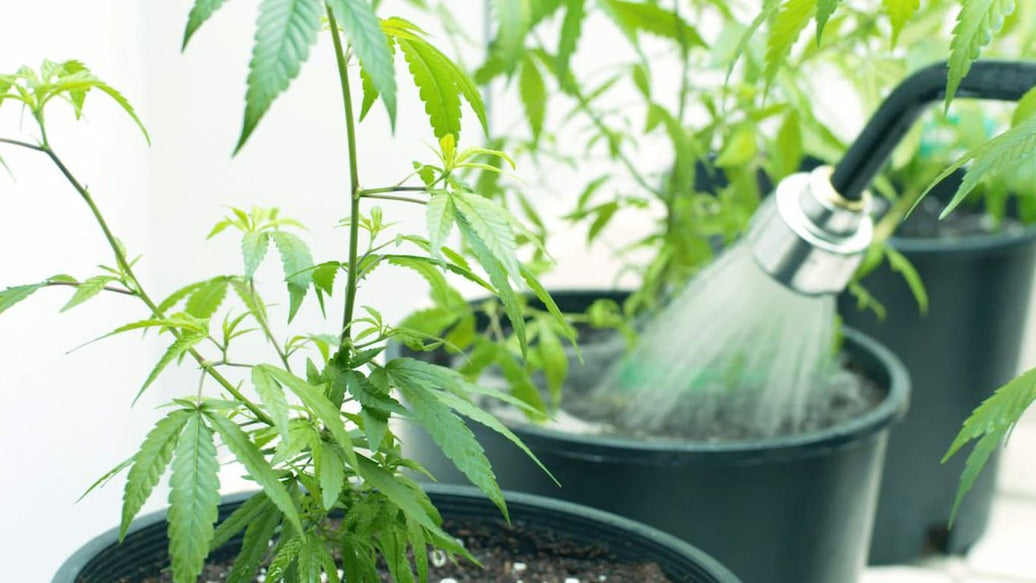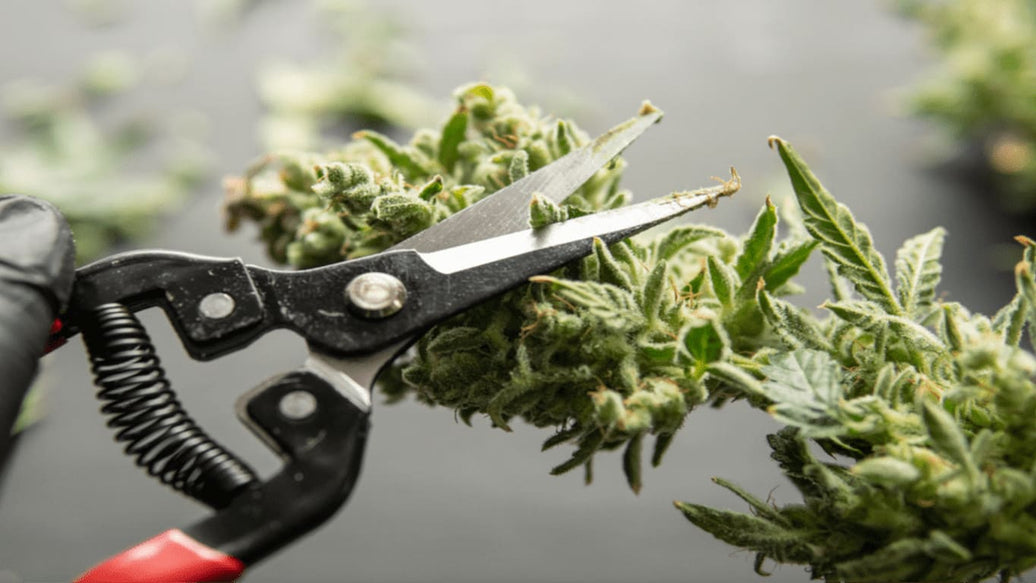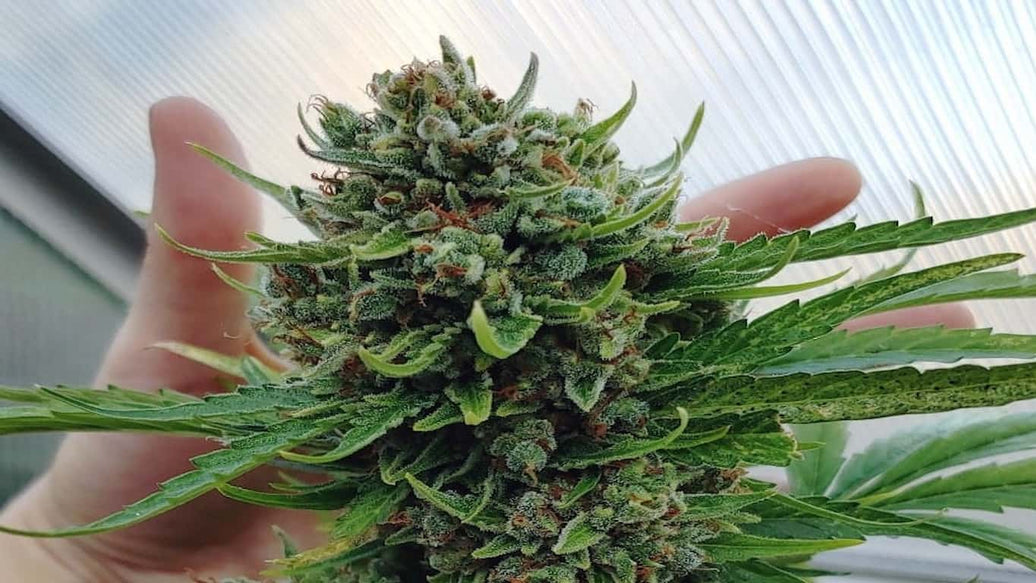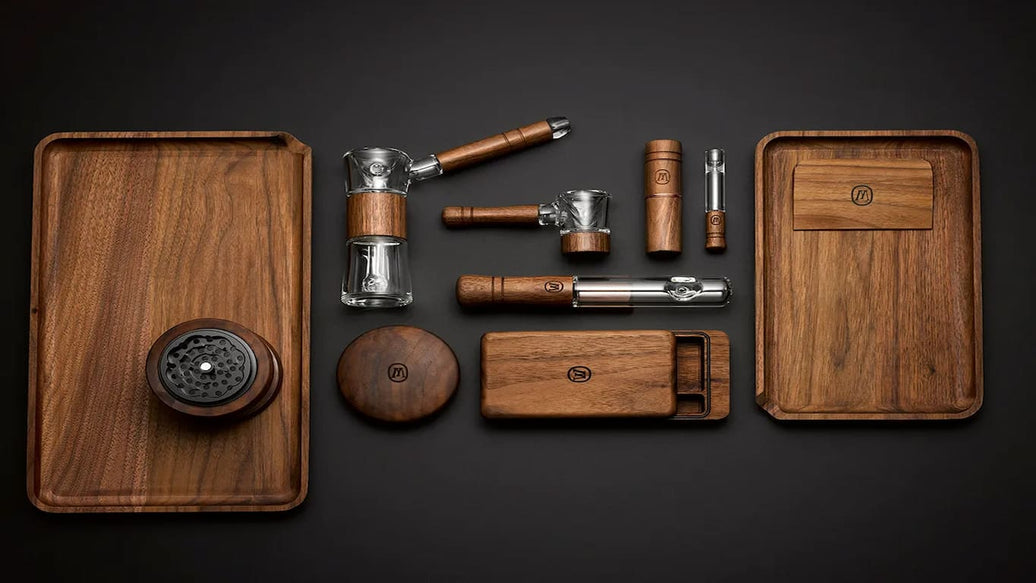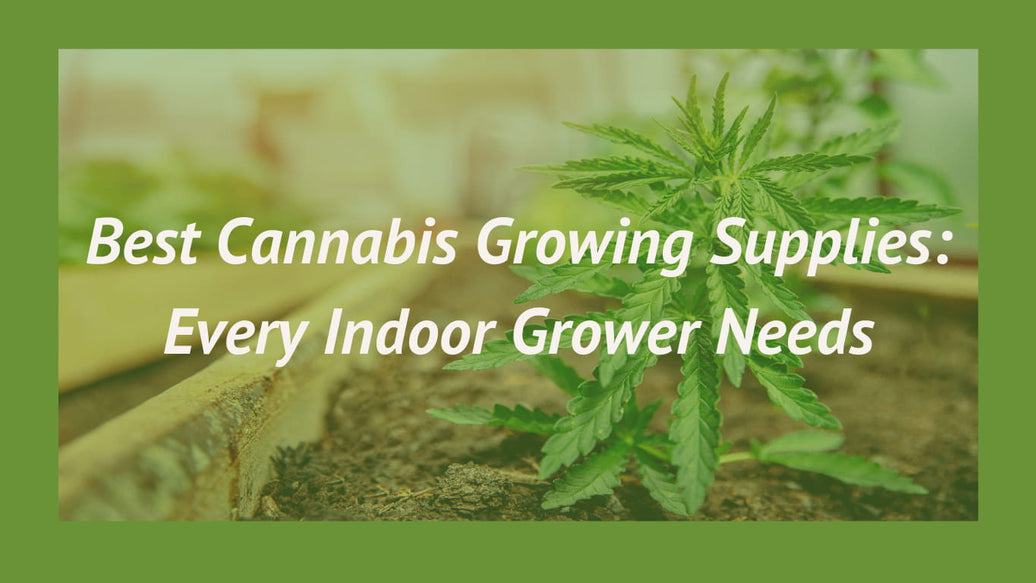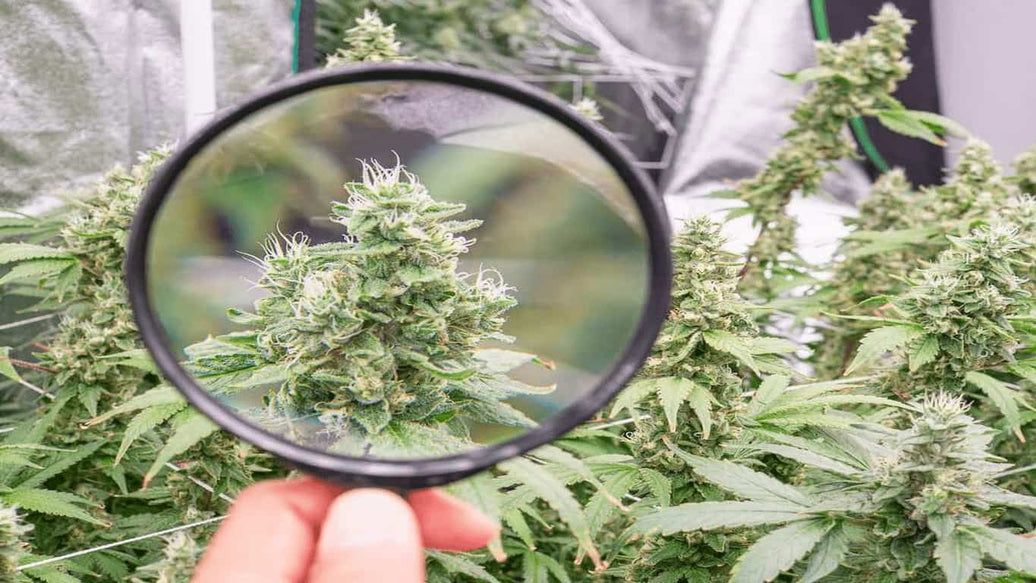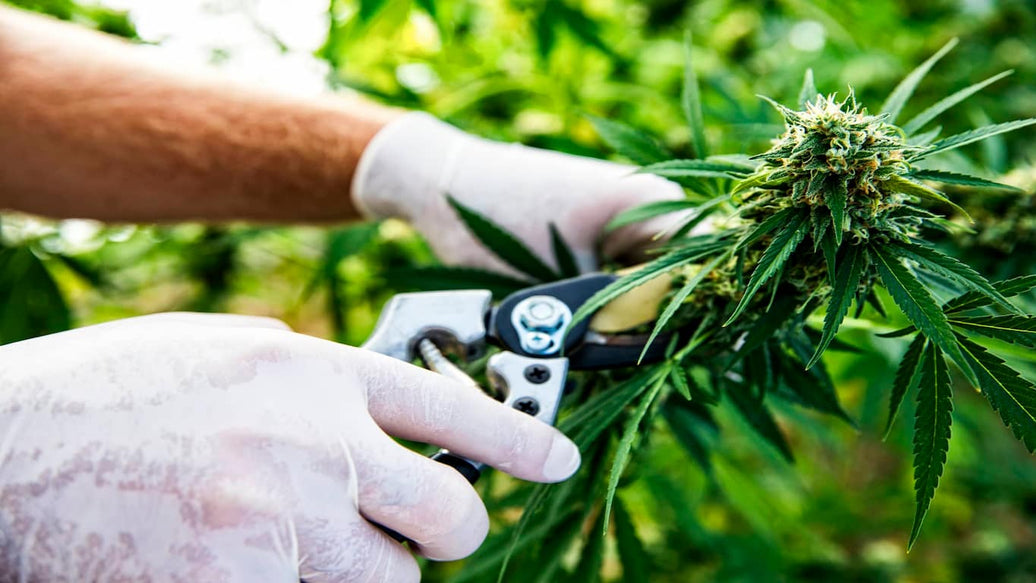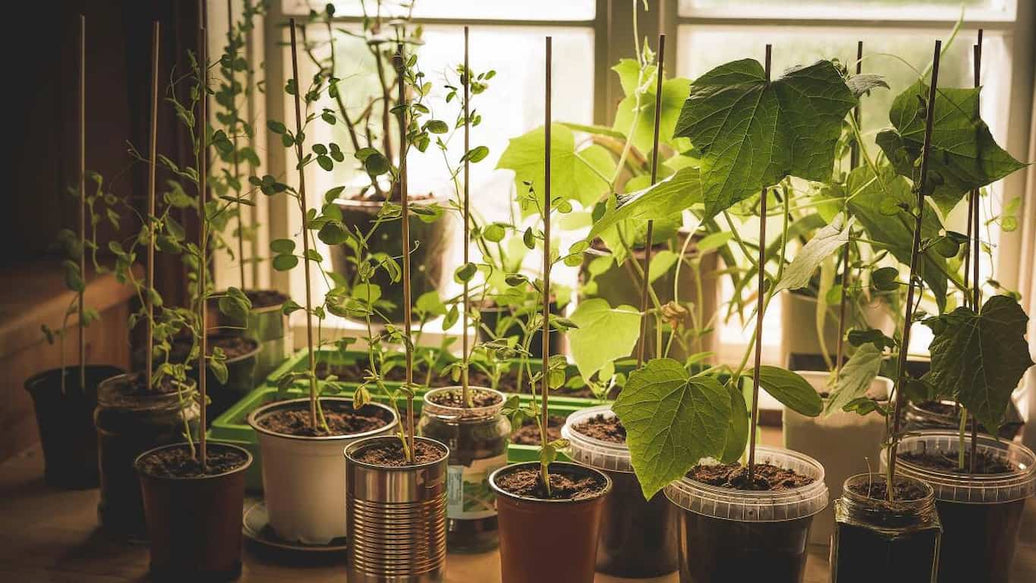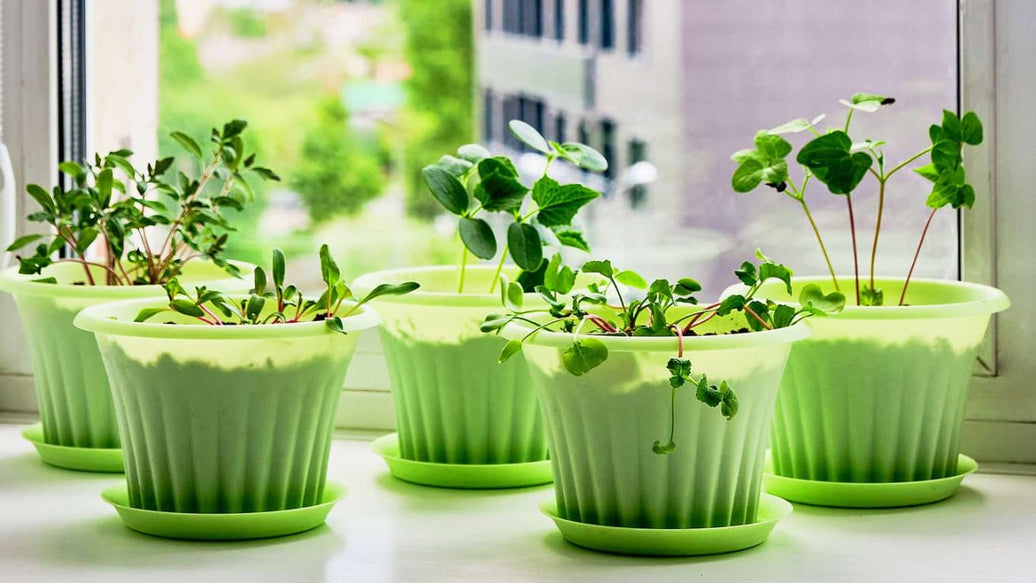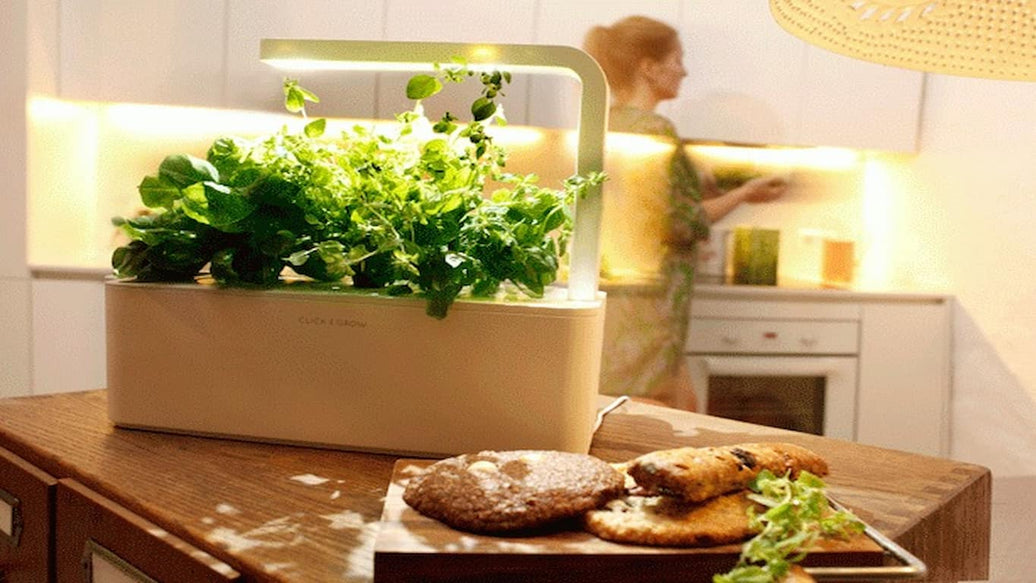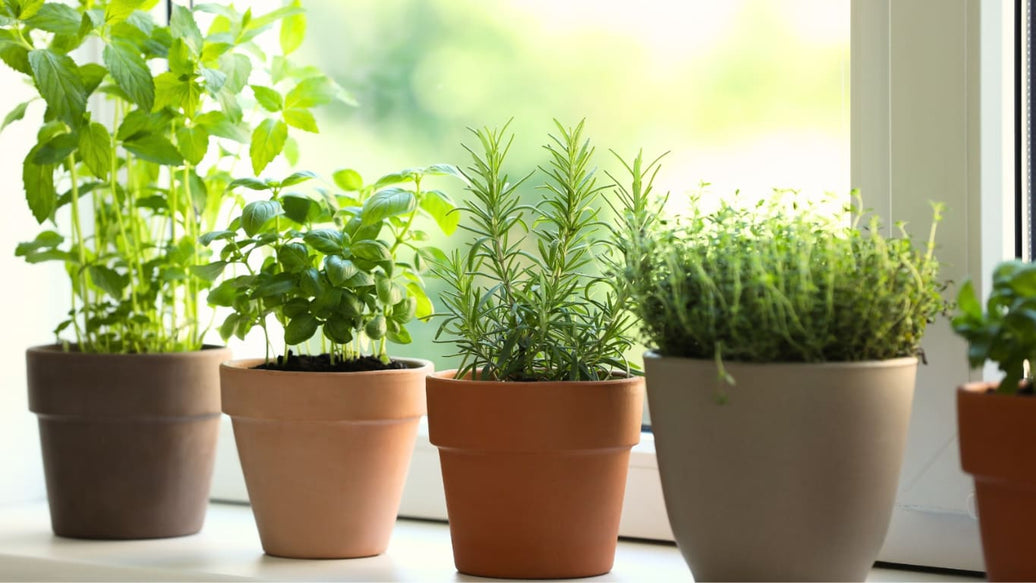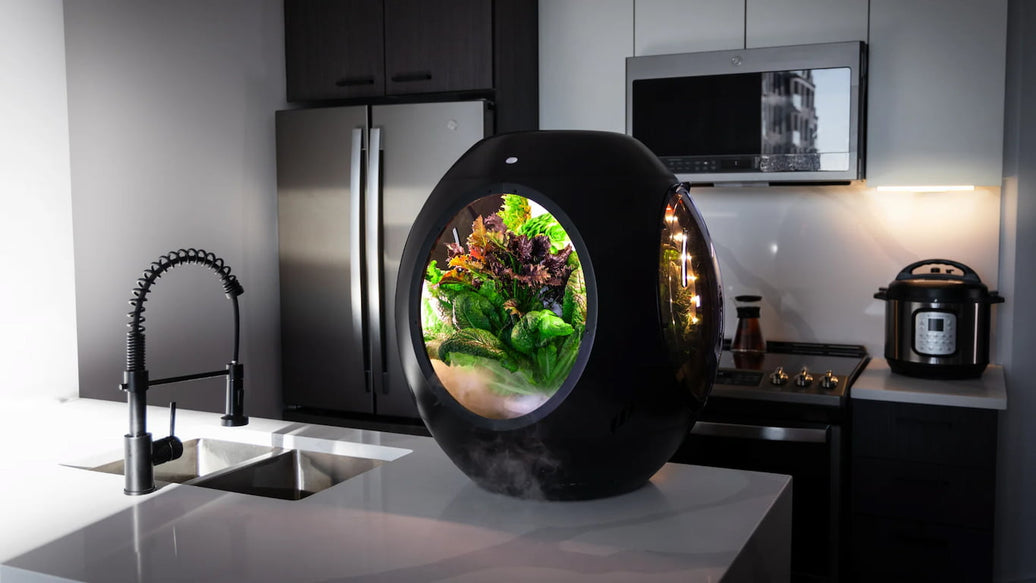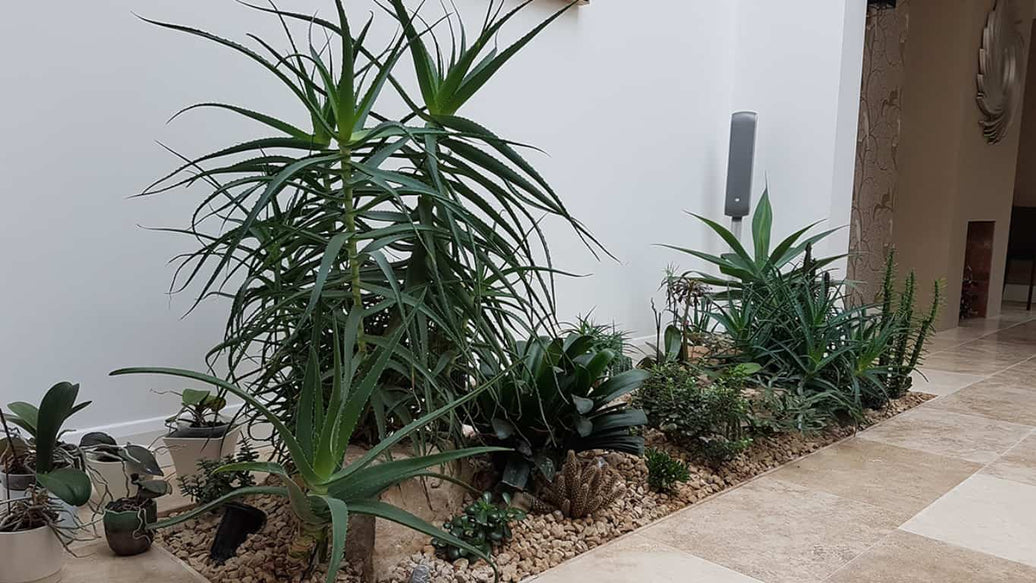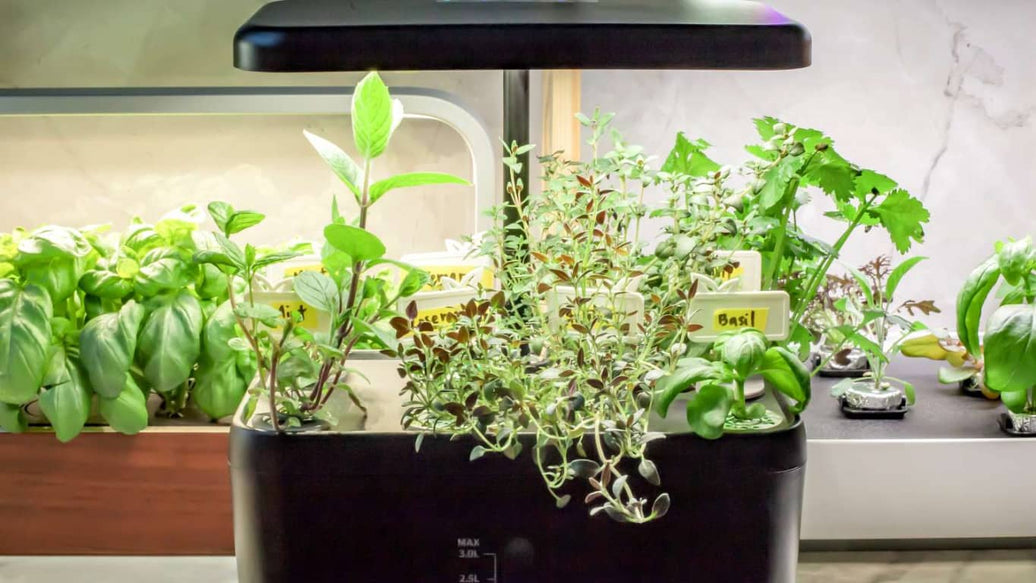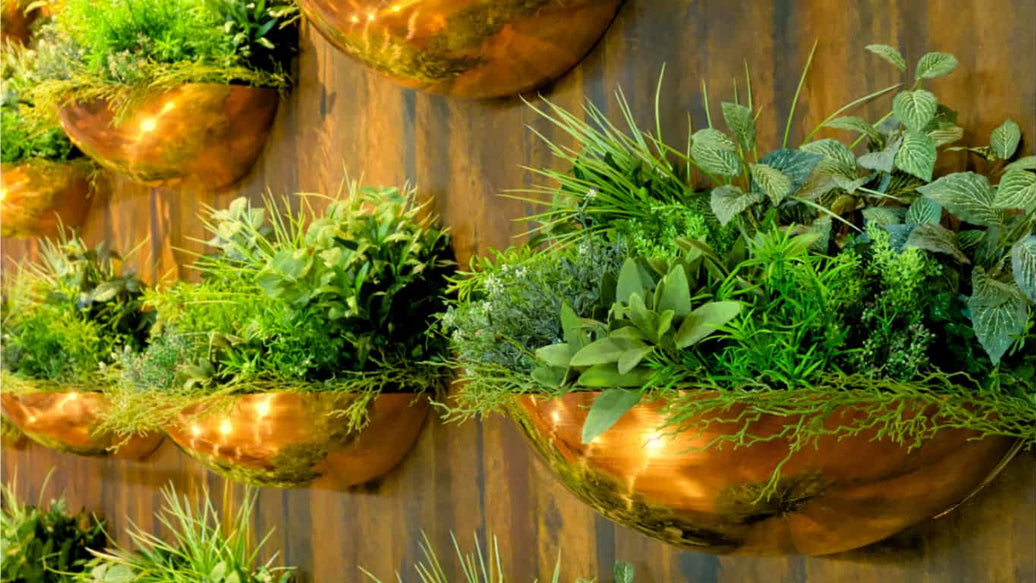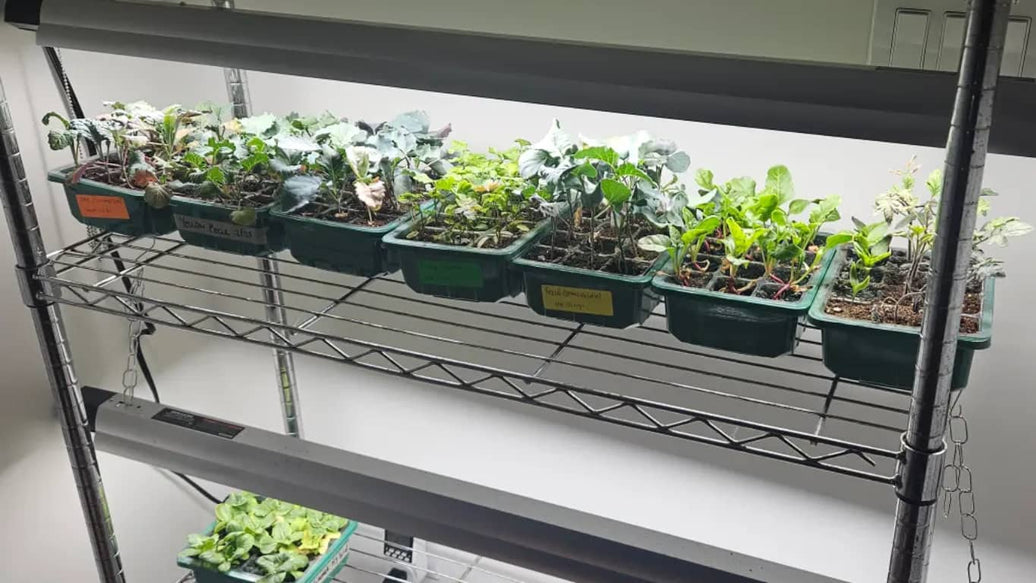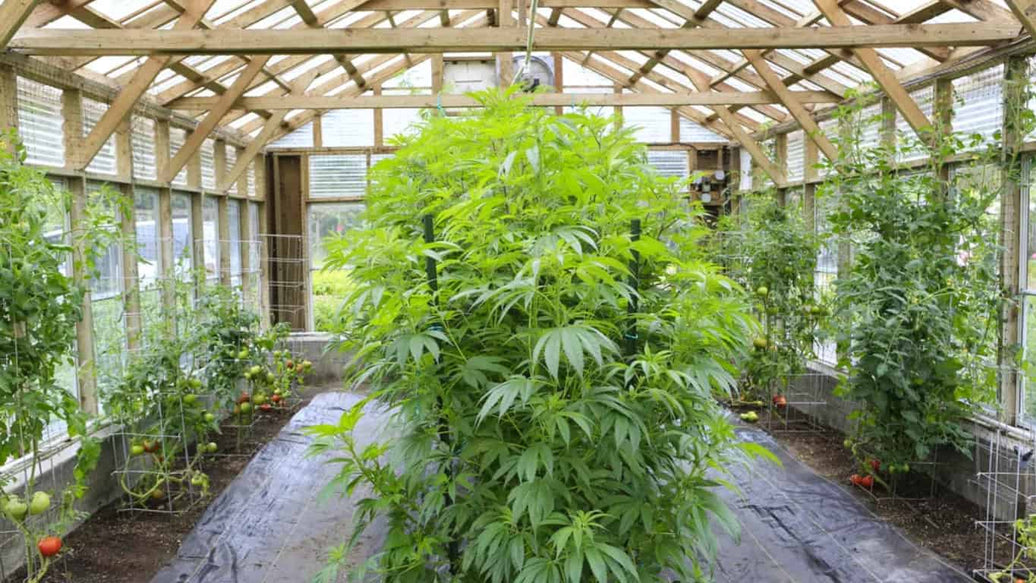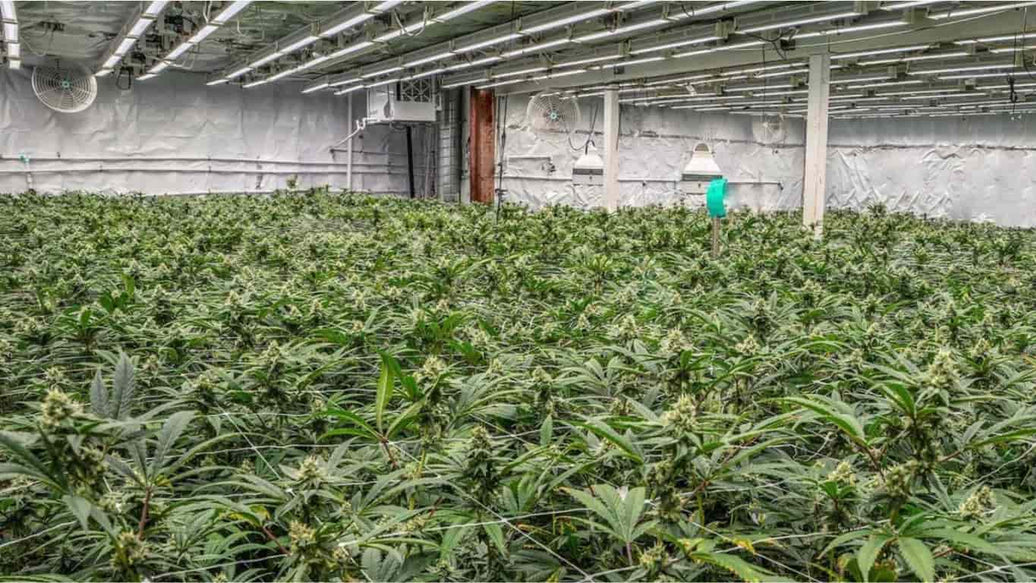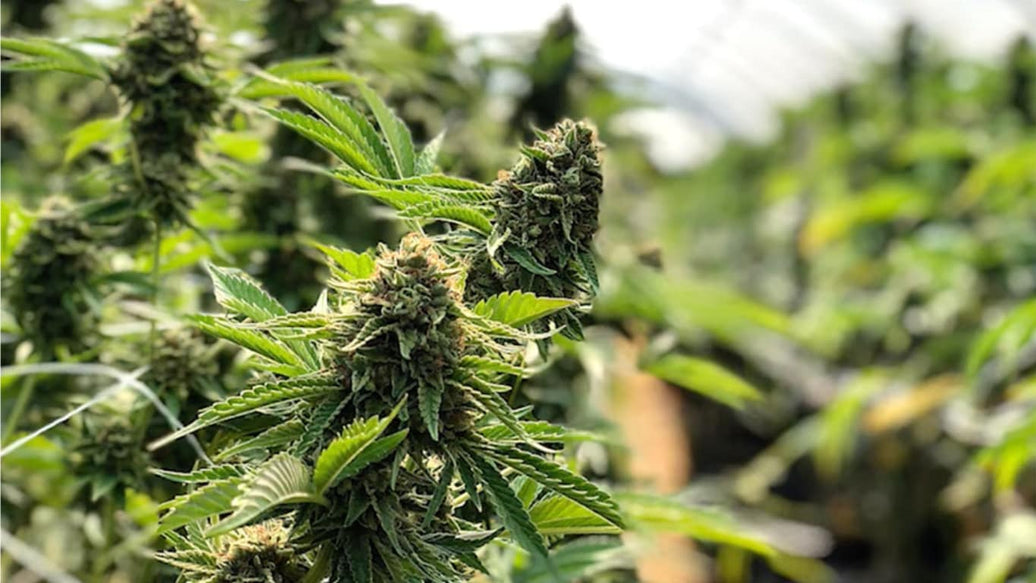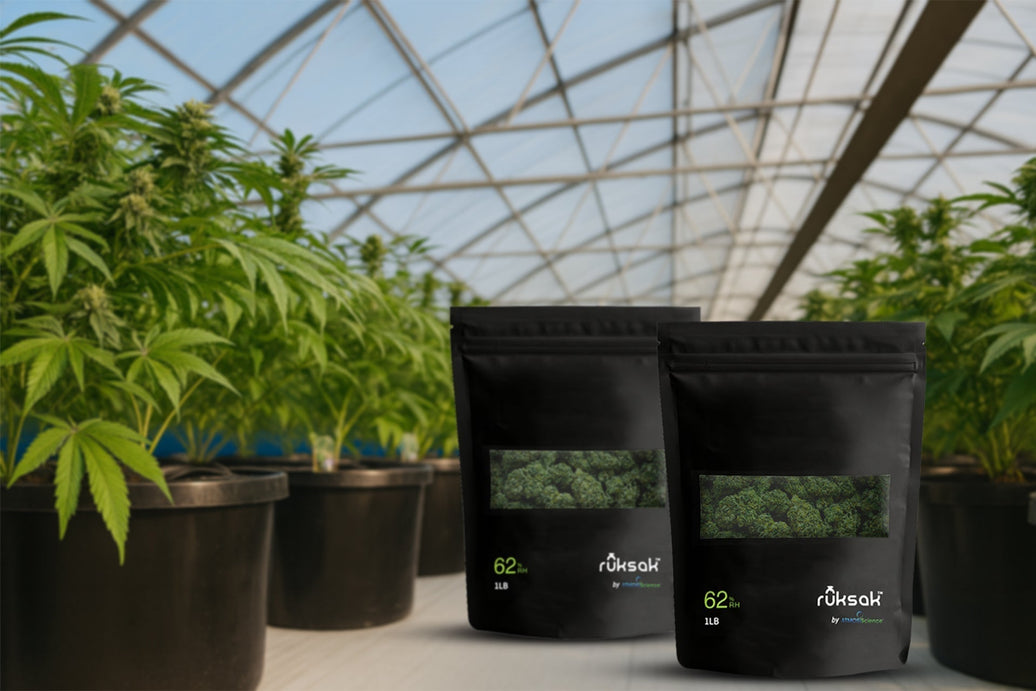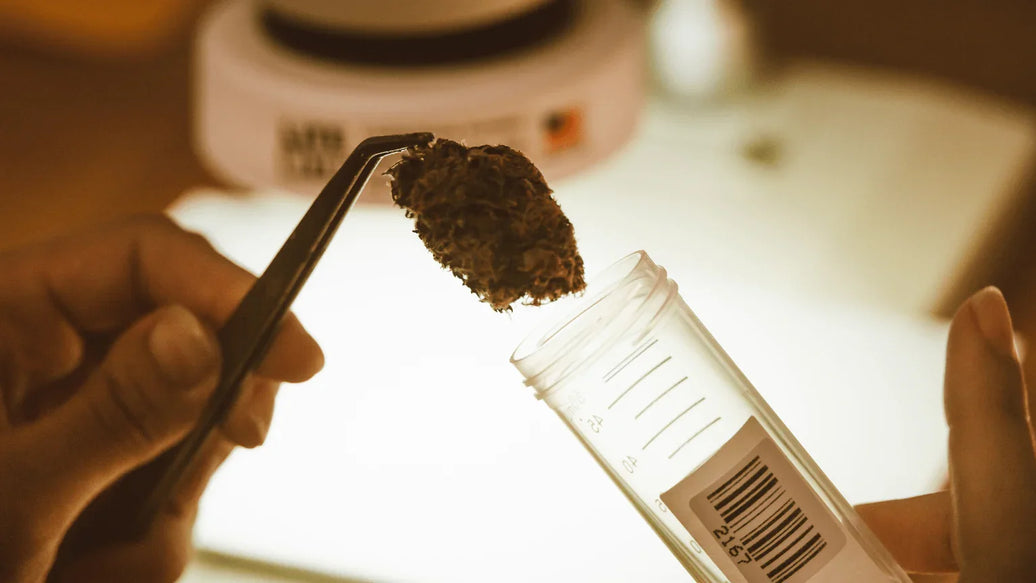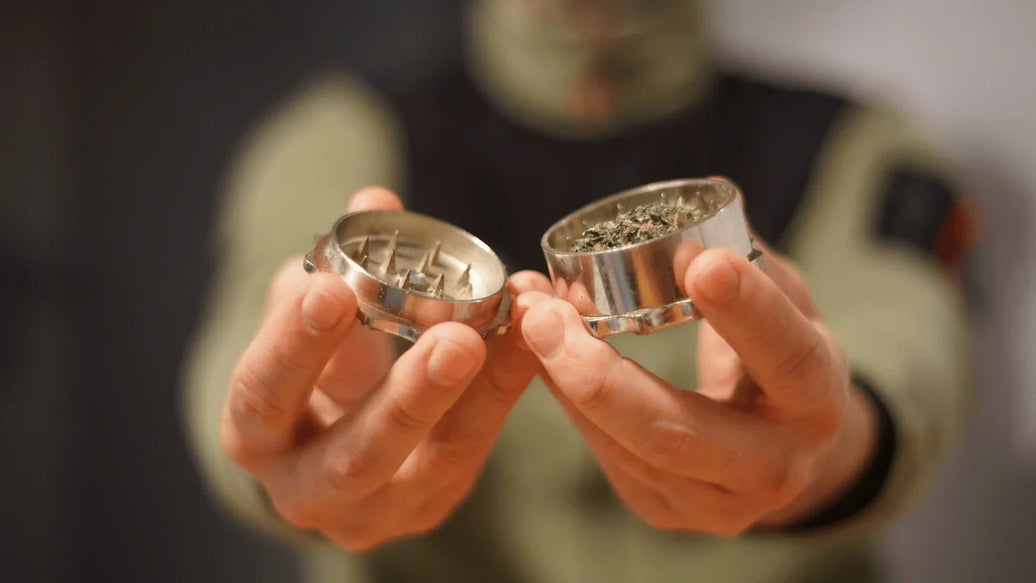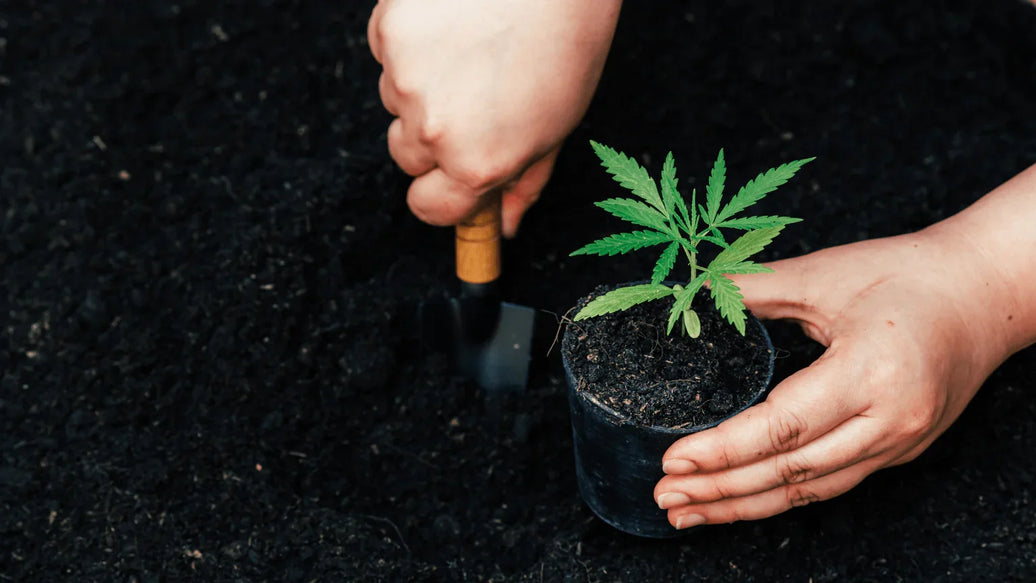Cultivating fresh herbs within an indoor kitchen garden is an enjoyable and practical way to combine health, convenience, and eco-friendliness in a compact space. As more individuals embrace homegrown food, indoor kitchen herb gardens have rapidly gained traction. This blog will analyze the scientific principles of indoor herb cultivation, guidance on selecting suitable herbs, setting up your personalized kitchen herb grower, ongoing care, and the numerous culinary and wellness benefits of fresh herbs at arm’s reach.

The science behind growing herbs indoors
To achieve flourishing results in an indoor kitchen garden, understanding the growth prerequisites for herbs is essential. Due to constraints such as limited natural light and space, some factors differ from traditional outdoor gardening. The primary influences on herb vitality include light availability, temperature stability, and water management.
Light and photosynthesis
Herbs require light to undergo photosynthesis, the process where plants transform light energy, CO₂, and water into sugars and oxygen. Typically, most culinary herbs demand at least 6 hours of direct sunlight, or when indoors, 14 to 16 hours of high-quality artificial light. Strategically placing your indoor kitchen herb garden near south or west-facing windows provides ample sunlight, but in less bright areas, LED grow lights that replicate sunlight’s spectrum are crucial to ensure vigorous herb growth.
Temperature and humidity
Ideal temperatures for herbs range between 65°F and 75°F (18°C to 24°C). Exposure to temperatures lower than 55°F or higher than 85°F can inhibit growth and compromise flavor. Consistent indoor humidity levels around 40% to 60% prevent leaf drying and minimize fungal infections. Advanced kitchen herb growers often come equipped with climate regulation features to maintain these optimal conditions automatically.
Soil quality and drainage
Success in an indoor kitchen herb garden hinges on using loose, nutrient-rich, and well-drained soil. A blend containing peat moss, perlite, and organic matter enables good root aeration while supplying essential nutrients. Containers used within kitchen herb growers must have sufficient drainage holes to avoid water accumulation that can cause root rot.
Watering practices
Watering should keep the soil moist but never soaking wet. Overwatering is a common problem that can lead to root diseases within indoor environments. Utilizing smart watering systems designed for kitchen herb growers helps maintain consistent soil moisture, fostering healthier plants.

Selecting ideal herbs for your indoor kitchen garden
The herbs you pick play a critical role in your garden’s success and your ongoing satisfaction, as some varieties adapt better to indoor environments.
Preferred herbs for the indoor kitchen herb garden
- Basil (Ocimum basilicum): Loves warmth and bright light; perfect for numerous cooking styles.

- Oregano (Origanum vulgare): More tolerant of moderate light; a sturdy addition to your indoor kitchen garden.
- Mint (Mentha spp.): Rapid growth demands separate pots to avoid overrunning neighboring plants.
- Rosemary (Rosmarinus officinalis): Requires strong light and good air flow.
- Thyme (Thymus vulgaris): Compact and drought-tolerant, excellent for less frequent watering indoors.
- Parsley (Petroselinum crispum): Prefers moderate indirect light and steady moisture.

Companion planting and root space optimization
Avoid crowding by using modular or tiered setups in your kitchen herb grower. This arrangement prevents root competition, maximizes nutrient uptake, and encourages healthy development for all planted herbs.
Nutritional and medicinal value
Scientific studies affirm that herbs grown indoors conserve potent antioxidants, flavonoids, and essential oils. These compounds support heart function, digestion, and bolster immunity. defenses. For example, basil contains eugenol, acting as a natural anti-inflammatory, while thyme has recognized antimicrobial properties.
How to establish your indoor kitchen garden
Proper setup is key to nurturing a sustainable and fruitful indoor kitchen herb garden.

Choosing the right containers
Select pots made from breathable materials like terra cotta or ceramic, ensuring they have drainage holes. Self-watering pots tailored for kitchen herb growers provide steady hydration and minimize the risk of underwatering or overwatering.
Soil and nutrient mix
Use premium, sterile potting soil blended with organic compost or fertilizers designed for herbs. Avoid dense garden soil as it restricts drainage. Fertilize every few weeks with a balanced liquid fertilizer to support ongoing growth without diminishing flavor.
Light and placement
Position your indoor kitchen herb garden close to a south-facing window to maximize daylight exposure. When natural light is limited, investing in full-spectrum LED grow lights designed specifically for herbs guarantees consistent growth.

Automated watering options
Incorporating moisture sensors or smart irrigation systems with your kitchen herb grower ensures plants receive water as needed, cutting down on maintenance and improving overall plant health.
Maintenance and care considerations
Consistent attention and adaptation are crucial to keeping your indoor kitchen herb garden thriving.
Monitoring environmental conditions
Track ambient temperature, humidity, and light levels regularly, adapting your setup to seasonal changes. Adjust LED grow light duration and intensity, and if needed, use humidifiers or fans to maintain the ideal environment.
Feeding and fertilization
Feed your herbs with a mild balanced fertilizer every two to four weeks during their active phase. Overfertilizing can reduce the intensity of flavors, so apply cautiously.
Managing pests and diseases
Indoor herbs usually face fewer pest problems, but aphids, spider mites, and mild fungal infections can occur. Employ natural controls such as neem oil or insecticidal soaps. Ensure good air circulation and avoid excess moisture to prevent fungal outbreaks.

Harvesting for continuous growth
Regularly pinch off herb tips to encourage bushy, vigorous growth. Never harvest more than a third of an individual plant at once to prevent stress and maintain productivity.
Designing an Efficient and attractive indoor kitchen garden
Strategic design improves both the functionality and look of your indoor kitchen herb garden.
Space-saving layouts
Vertical planters, tiered shelves, and window-mounted containers maximize limited kitchen space. Modular kitchen herb growers allow you to customize your garden size and relocate it easily.
Smart growth systems
Automated kitchen herb growers integrate lighting, watering, and temperature control into one compact unit, simplifying herb cultivation and increasing success even for beginners.
Seamless kitchen integration
Position your indoor kitchen garden within reach of cooking areas, enhancing convenience and encouraging frequent use. Many systems are designed to fit seamlessly into modern kitchen aesthetics.

The health and culinary advantages of fresh herbs from your indoor kitchen herb garden
Having fresh herbs at home offers both nutritional and flavor benefits.
Rich in nutrients and beneficial compounds
Herbs from your indoor kitchen garden are abundant in vitamins A, C, and K, antioxidants, and bioactive compounds like rosmarinic acid and thymol, which have anti-inflammatory and antimicrobial effects.
Enhanced flavor and culinary versatility
Fresh herbs elevate meals with vibrant aromas and tastes. From fresh mint in teas to basil-infused sauces, the direct use of your garden’s harvest transforms everyday cooking.
Ways to preserve and use your herbs
Drying, freezing, or making infused oils and pestos are effective methods to extend the life and utility of excess herbs.

Conclusion
Building and maintaining an indoor kitchen garden is both an art and science that delivers fresh, flavorful, and health-enhancing herbs year-round. By applying scientific principles of light, water, temperature, and soil, combined with smart setup and regular care, you can enjoy the bounty of your own indoor kitchen herb garden. Incorporating advanced kitchen herb growers can further simplify the process and guarantee success. Take the first step into sustainable living by creating your very own herb oasis indoors.

